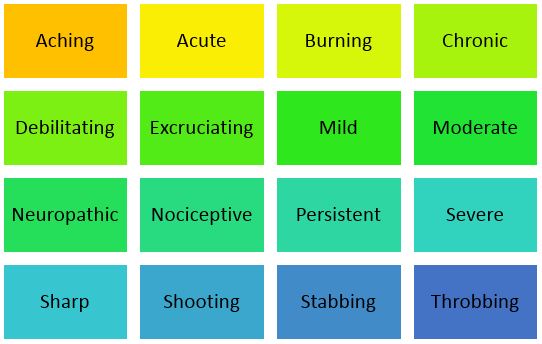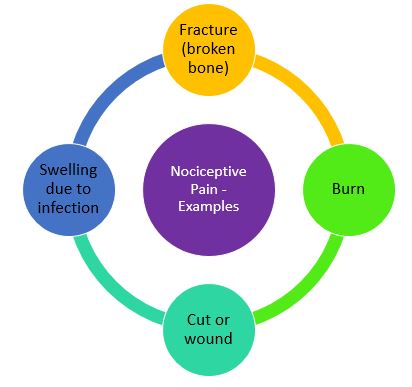While reading about rare diseases over the past few weeks, I’ve noticed that these conditions often involve some type of pain. And there seem to be a lot of different descriptions for pain, including:

In articles in medical journal, the two Ns came up the most often, so they’re the ones I’ll write about first; neuropathic pain & nociceptive pain. I’m not a medical doctor, but my field is bioethics (also called biomedical ethics). I’ve worked in a hospital, and then in medical research ethics, so I’d like to try to provide simple explanations of these 2 types of pain.
To start, it’s good to know that these 2 words aren’t used to describe how pain feels. The words neuropathic and nociceptive are used to explain what’s causing the pain. It’s important for a doctor to know if pain is neuropathic or nociceptive, because they’re usually not treated the same way.
Nociceptive pain is caused by damage to bones, skin, tissue; parts of your body that aren’t directly related to the nerves. This type of pain can also be felt as a warning, to help prevent an injury.
If you’ve ever held your hand over a flame, and moved it away because you felt pain – that was your body sending you a pain as a warning, to prevent an injury. If you left your hand over the flame, you’d get a burn. The pain tells you to move your hand out of danger.
These are some examples of nociceptive pain:

Neuropathic pain is caused by problems with the nervous system, the nerves that run all through the body. This type of pain is felt because of nerve damage, or nerves that aren’t working properly, or something pressing on a nerve. Neuropathic pain can also be caused by a disease or an injury.
Nerves send pain messages to the brain. These messages can start from the bones, internal organs (like the heart, lungs, and kidneys), muscles, skin – from almost anywhere in the body.
The nerves in the affected area send a pain message to the spinal cord. The spinal cord, which runs along the vertebrae of your back, is connected to the brain. So the pain message travels from the nerves, then up the spinal cord, to the brain. And the brain tells your body to feel pain.
These are some examples of neuropathic pain:

Nociceptive pain should go away when the cause of the pain is treated and the injury or inflammation heals. A broken arm will stop hurting as it mends, as will a sprained ankle, or a burn.
Neuropathic pain may not go away. Sometimes the damage, or malfunction, of the nerve is permanent. Other times the pain message to the brain continues, even after the injury has healed. That kind of pain might not be permanent & it could go away someday.
The out-of-control pain message might be what happens in my rare disease; Complex Regional Pain Syndrome (CRPS), also called Reflex Sympathetic Dystrophy (RSD). To learn more about CPRS/RSD, read my blog post from June 3rd.
Thanks for reading, and feel free to leave a comment!
